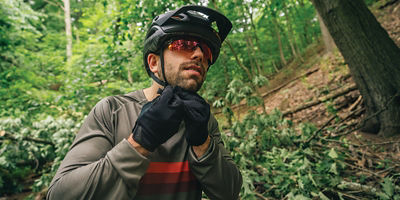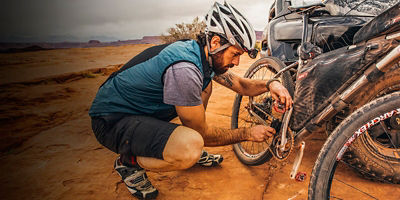
Whether you’re heading to work, sprinting across your favorite stretch of tarmac, or ripping down singletrack, you’ll likely want to add a layer when the weather turns cold. To keep warm and to guard against precipitation, many riders turn to a cycling jacket. How you ride and the conditions you’ll face—not to mention how much you want to spend—will determine what shell layer makes sense for you. Here’s how to pick the right bike jacket for cold-weather riding.
Questions To Ask Yourself
Before you buy, consider where you ride and the kind of riding you like to do.
What style of riding will I use this jacket for?
Jackets are designed for mountain biking, road riding, and commuting—get one that matches your preferred riding discipline.
What conditions will I ride in?
If you never ride in cold, wet weather, don’t buy a jacket designed for those conditions; the added warmth and waterproofing will just hamper your performance. Instead, buy a jacket that’s suited to the conditions you’ll use it in. Go light if you just need an emergency layer to get you through the last two miles in a surprise rain shower. Or, if you ride through even the gnarliest weather, look for robust features beyond added warmth for a cold ride.
What features do I value?
No one jacket will have maximum breathability and low weight along with maximum waterproofing, windproofing, warmth, and comfort. More cost-effective jackets will often be highly waterproof but not very breathable, for example, or they’ll be breathable and not very waterproof. Decide which of these features is most important to you before you start shopping.
Jacket Cuts
A cycling jacket should be cut to work with the way you ride. This means it often has a longer tail to cover your lower back as you bend over the bars, form-fitting sleeves to keep the fabric from flapping in the wind, and added protection at the chest, which is where wind and precipitation will hit you especially hard. Beyond that, jackets are cut for specific riding disciplines.
Road Jackets
Jackets for road riding are often cut similarly to road cycling jerseys. They will be form-fitting with little excess fabric for better aerodynamics. Often, road jackets will have three rear storage pockets for water and fuel, just like a cycling jersey.
Mountain Bike Jackets
Compared to road jackets, these often have a looser fit, since aerodynamics are less of a concern for MTB riders. Many have added protective features like a hood, and they’re often highly packable, so you can store them on your bike and take them on and off during your ride. That versatility is helpful for dealing with the changing conditions of MTB riding, like hustling uphill and then coasting down.
MTB jackets’ looser design allows more freedom of movement, and it also makes them useful for off-bike activities like hiking—or post-ride beers.
Commuter Jackets
These are closer to MTB jackets and will have a more casual look that’s suitable for off-bike wear. Commuter jackets often have a hood to protect you from precipitation as well as more rugged, heavier waterproofing and insulation. These jackets prioritize protection over weight savings—for commuters, arriving at a destination dry and warm is more important than shaving ounces.
Women’s Jackets
Regardless of riding discipline, many jackets now come in specific women’s cuts that more closely match the proportions of female bodies. The result is a more comfortable, ergonomic fit on the bike.





















